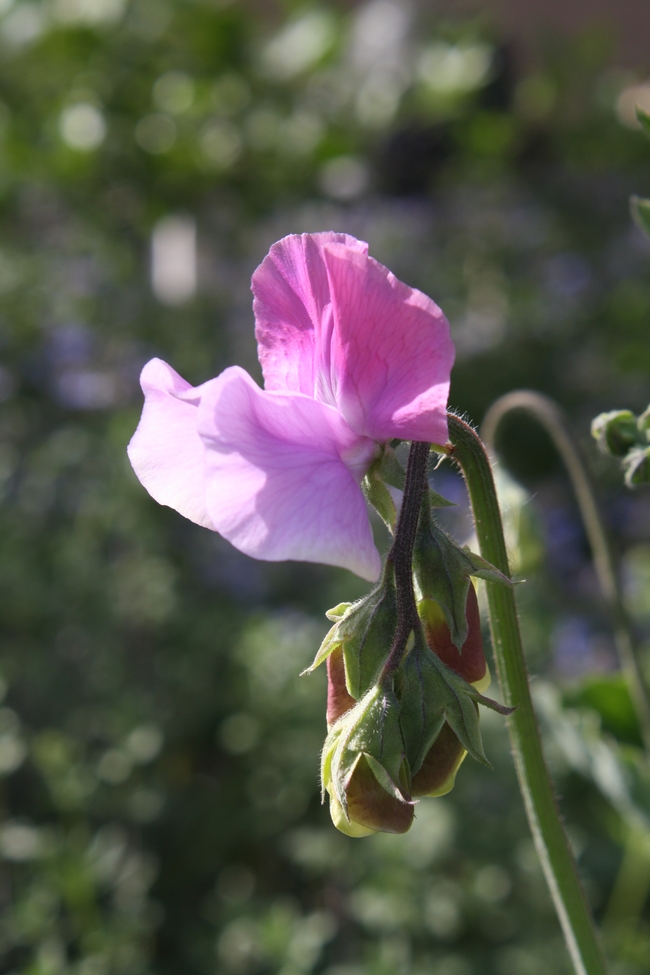Posts Tagged: fragrance
Japanese Flowering Apricot
When we first purchased our current home, before we even moved in, we stopped by a garden nursery’s going out-of-business sale. A salesclerk caught us eyeing a Japanese flowering apricot (Prunus mume) and burst out “I can’t believe we have one of those left, those are beautiful trees!” Impressed by the salesclerk’s enthusiasm, and frankly, the deeply discounted price, we purchased the tree. It would be the centerpiece in our small front yard. Every year since then, I have referred to it as “that stupid tree.” Each August, I stand before the tree and scold it for its wind-whipped shape, its failure to develop any interesting form, and its dull, sickly-looking leaves, and I threaten to chop it down and replace it.
But then, inertia sets in. Before I know it, the cold, bleak days of January have arrived (at least they do in normal years). And my Japanese flowering apricot puts on such a spectacular, fragrant, flowering show that it earns its reprieve . . . at least until the following August.
According to the Sunset Western Garden book, the Japanese flowering apricot will develop into a “gnarled picturesque tree,” 20 feet tall and wide, suitable for small gardens or near walkways. The blossoms form on leafless branches in the depths of winter—midwinter to early spring—when little else is blooming. Most sources describe the scented blossoms as having a clean, spicy fragrance. To me, my tree smells like glorious cinnamon-spice explosion—I can smell it nearly half-way down the block! Depending on the cultivar, the petals range from white to pink to red, with single or double blooms. The tree produces yellow-green, 1-inch fruit, which can be edible if prepared properly, but are generally considered inedible in the United States. You can see cultivars at both UC Davis Arboretum and the UC Berkeley Botanical Garden.
In retrospect, my Japanese flowering apricot may have been happier if I hadn’t planted it in a hot, windy, location in heavy clay soil (despite our efforts to amend the soil). After 12 years, it’s neither “gnarled” nor “picturesque” by any stretch of the imagination. But in midwinter, on a grey, rainy day, I will put on a coat and sit on our front porch, just to breath in its fragrance and enjoy the rare spot of color for this time of year, and I will be glad of our impulse buy from years ago.

Flowering apricot up close. (photos by Erin Mahaney)

Branch loaded with apricot flowers.
The Romance of Sweet Peas
October is the month to plant sweet pea seeds and I can hardly wait to get mine in the ground! In 1817, poet John Keats wrote “Here are sweet peas, on tip toe for a flight; With wings of gentle flush o’er delicate white, And taper fingers catching at all things, To bind them all about with tiny rings.”
Sweet peas, which have the descriptive Latin name Lathyrus odoratus, are incredibly gorgeous and powerfully perfumed. Often we smell them before we see the blossoms and the perfume invites us to find them, lifting our spirits and making us smile. Having a passion for sweet peas, I’ve been growing them annually for nearly 50 years.
It’s ideal to plant the seeds in an area where they can climb and be supported. Cement wire against a fence or wire between two poles in an open area will work well. The soil needs to be amended with compost and manure.
These tiny, round, hard seeds need to be soaked in water overnight. Soaking them softens the hard seed shell and encourages them to sprout. My grandmother placed her seeds on wet paper napkins on a tray in the basement and left them for several days until they were swollen and ready to “pop.” I use the same technique, using paper towels and an old cookie sheet. I carry that into the garden and place each seed individually 3 inches apart and ½ inch deep, thinning to 6 inches apart as they grow.
As soon as the plants emerge, grab some snail bait, as slugs and snails will feast on these seedlings! As the vines grow, they may need to be wound between the wire support until the tendrils grab hold. At this point, there’s not much to do until mid-April when the vines will vigorously grow and the incredible flowers appear. Sweet peas need to be picked daily for continuous blooming. The flowers will scent your home and are welcome gifts for friends and neighbors. As the vines turn brown and dry in June, there will be pods you can collect seeds for the following October. I’ve found that everyone loves sweet peas! Now, I’ve got to get busy!


